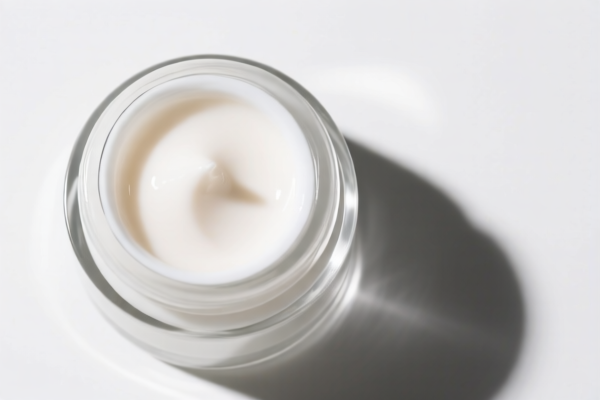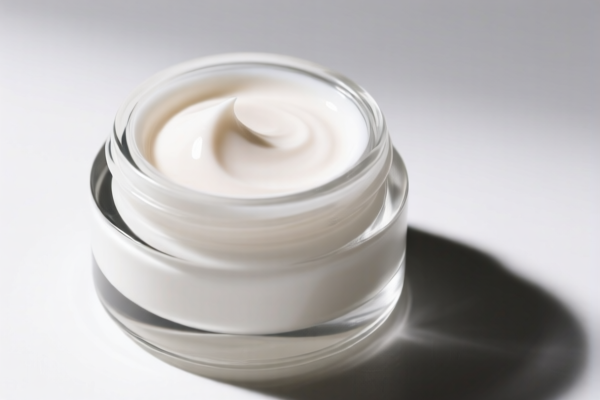| HS Code | Official Doc | Tariff Rate | Origin | Destination | Effective Date |
|---|---|---|---|---|---|
| 3307900000 | Doc | 60.4% | CN | US | 2025-05-12 |
| 3214100020 | Doc | 58.7% | CN | US | 2025-05-12 |
| 3214100090 | Doc | 58.7% | CN | US | 2025-05-12 |




Repair Cream
Repair creams are topical formulations designed to aid the skin's natural healing process and restore its barrier function. They are typically more occlusive and richer in ingredients than standard moisturizers, focusing on addressing damaged or compromised skin.
Material Composition
The composition of repair creams varies widely depending on the intended use and severity of skin damage. Common ingredients include:
- Occlusives: These form a protective barrier on the skin's surface, preventing water loss and protecting against irritants. Examples include petrolatum, mineral oil, shea butter, and dimethicone.
- Emollients: These soften and smooth the skin, improving its texture. Common emollients include ceramides, fatty acids, and plant oils (e.g., jojoba oil, sunflower oil).
- Humectants: These attract moisture to the skin. Examples include hyaluronic acid, glycerin, and urea.
- Active Ingredients: These target specific skin concerns and promote healing. Examples include:
- Ceramides: Help restore the skin barrier.
- Panthenol (Pro-Vitamin B5): Soothes and moisturizes.
- Allantoin: Soothes and protects.
- Niacinamide (Vitamin B3): Reduces inflammation and improves skin barrier function.
- Centella Asiatica (Cica): Promotes collagen production and wound healing.
- Peptides: Stimulate collagen production.
- Antioxidants (Vitamin E, Vitamin C): Protect against free radical damage.
- Growth Factors: May promote cell regeneration (often found in more advanced formulations).
Purpose & Function
The primary purpose of a repair cream is to:
- Restore Skin Barrier: Damaged skin barriers lead to dryness, irritation, and increased susceptibility to infection. Repair creams help rebuild this protective layer.
- Hydrate and Moisturize: Intense hydration is crucial for healing.
- Reduce Inflammation: Many repair creams contain ingredients to calm and soothe irritated skin.
- Protect Against Infection: The occlusive barrier helps prevent bacteria and other pathogens from entering the skin.
- Promote Wound Healing: Certain ingredients stimulate cell regeneration and collagen production.
Usage Scenarios
Repair creams are used in a variety of situations, including:
- Post-Procedure Care: Following cosmetic procedures like laser treatments, chemical peels, or microdermabrasion.
- Eczema and Dermatitis: To manage dry, itchy, and inflamed skin.
- Wound Healing: Minor cuts, scrapes, burns, and abrasions.
- Dry, Cracked Skin: Hands, feet, elbows, and heels.
- Sunburn Relief: To soothe and hydrate damaged skin.
- Irritation from Harsh Weather: Cold, wind, and sun exposure.
- Managing Skin Conditions: Rosacea, psoriasis (with dermatologist guidance).
Common Types
- Barrier Creams: Focus on rebuilding the skin barrier with ingredients like ceramides and fatty acids. Often used for eczema-prone skin.
- Cica Creams: Contain Centella Asiatica (Cica) to soothe and promote healing. Suitable for sensitive and irritated skin.
- Post-Procedure Creams: Formulated specifically for use after cosmetic treatments, often containing ingredients to calm inflammation and promote cell regeneration.
- Hand and Foot Creams: Richer formulations designed to address the thicker, drier skin on hands and feet.
- Night Creams: Often contain a higher concentration of active ingredients and are designed to be used overnight when the skin is in repair mode.
- Medical-Grade Creams: Prescribed by dermatologists for specific skin conditions, often containing higher concentrations of active ingredients or specialized formulations.
Repair cream falls under preparations for personal care, specifically those used for skin care. Based on the provided information, the relevant HS codes are as follows:
- 3307900000: This HS code covers pre-shave, shaving or after-shave preparations, personal deodorants, bath preparations, depilatories and other perfumery, cosmetic or toilet preparations, not elsewhere specified or included; prepared room deodorizers, whether or not perfumed or having disinfectant properties. Since repair cream is a cosmetic or toilet preparation not specifically listed elsewhere, it falls under the "other" category of this code.
- 33: Chapter 33 relates to essential oils and resinoids; perfumery, cosmetic or toilet preparations.
- 07: Heading 07 specifically covers preparations for personal care, including cosmetic or toilet preparations.
- 900000: This subheading indicates "other" preparations within this category.
The total tax rate for this HS code is 60.4%, comprised of a 5.4% base tariff and a 25.0% additional tariff, increasing to 30.0% after April 2, 2025.
Customer Reviews
No reviews yet.